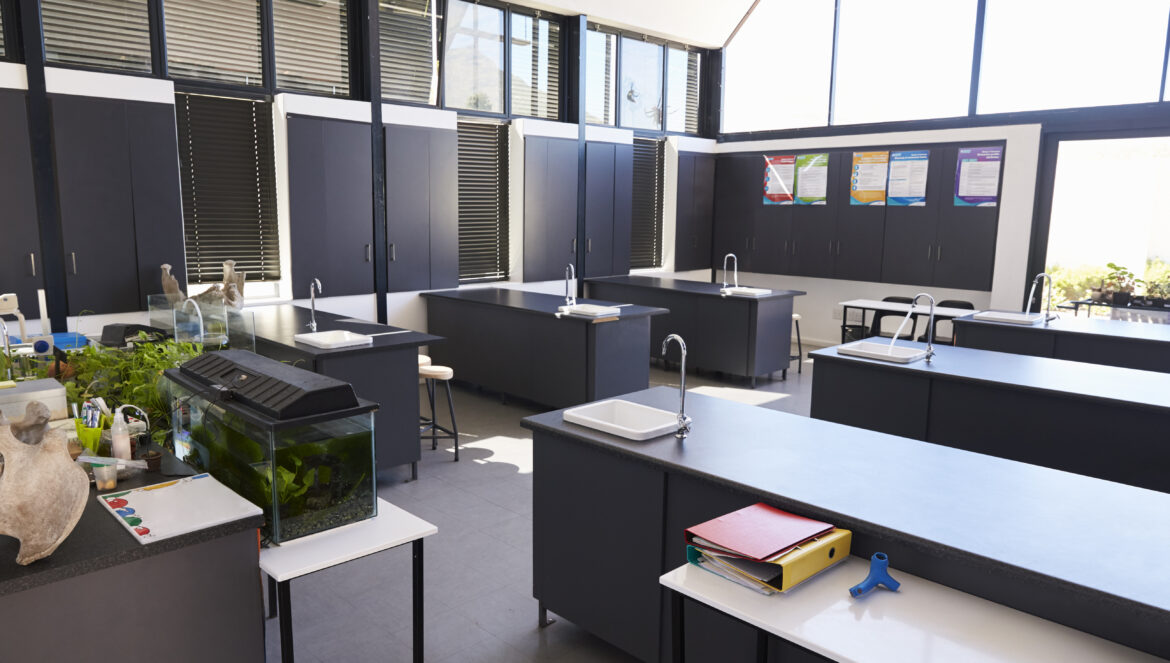Table of Contents
Dissection and virtual dissection are two different yet similar methods used to study the anatomy of organisms. Traditional biological dissections involves physically cutting open an organism to study its internal anatomical and physiological systems and structures. In contrast, virtual dissection involves using digital tools and software or synthetic materials instead of actual organisms to simulate the dissection process. Many educators view this as essential STEAM learning.
Both methods have their advantages and disadvantages, and their suitability depends on various factors such as cost, grade-level appropriateness, accessibility, and ethical considerations – which will all be factors contributing to the decision to perform dissection and then what kind of dissection to conduct. The STEAM education space has an abundance of suppliers who can provide both types of dissection products and solutions for students to use in their journey of biological exploration and understanding using the traditional and innovative technology-enabled approaches to suit the school and the learners.
Providing Hands-On STEAM with Dissections
Dissection has been used for centuries as a method to study anatomy, particularly in the field of medicine. It provides a hands-on experience that allows students to understand the three-dimensional structure of an organism’s organs and tissues. Dissection is also useful in identifying the differences between species, which can aid in taxonomic classification.
Certainly, all biology students can recite the Domain-Kingdom-Phylum-Class-Order-Family-Genus-Species regarding the biological classification of living things. However, dissections can have certain drawbacks. Conducting a dissection can be time-consuming and requires significant expertise to perform accurately and safely. Currently, there is a time famine occurring in science programs – meaning there is not always enough time to complete the expectations found in the curriculum. Having the necessary specimens on hand ensures that the class can perform the planned activity on your schedule – since there are reports of supply chain and delivery issues from science suppliers.
Additionally, dissection can be costly, particularly when large specimens are used that are sourced properly from reliable suppliers. Common specimens include grasshoppers, worms, perch, frogs, rats, fetal pigs, sheep brains, eyes, and hearts, among the most popular found in high school science departments.
The Advantages of Virtual Dissections
Virtual dissection, on the other hand, uses digital tools such as computer software, 3D models, and interactive simulations to provide a realistic, interactive experience of studying anatomy. Virtual dissection offers several advantages over traditional dissection. For example, students can perform them remotely, which reduces costs and increases accessibility since the biology lab is not a necessity for this activity. Virtual dissection is also more ethical, as it does not require using live animals or specimens for investigation.
Furthermore, virtual dissection allows students to practice their skills repeatedly without needing new specimens. It is particularly useful in high-volume programs and a major cost-saving for the science department. These dissection simulations and virtual solutions became more popular during the pandemic when these digital versions were used to help remotely deliver a robust biological program.
Limitations of a Virtual Substitute
Despite these obvious advantages, the use of virtual dissection also has some limitations. One major drawback is that a digital platform does not provide the same ‘tactile’ experience as traditional dissection, which can hinder understanding certain anatomical structures. Furthermore, virtual dissection relies on the digital models’ accuracy, which can sometimes be inaccurate or incomplete. Finally, virtual dissection may not be suitable for students who are more tactile learners or those who prefer a hands-on approach to learning.
Some new technologies allow students to ‘dissect’ a specimen that is made of a synthetic material that simulates the actual real specimen. Hence, they benefit from the tactile, experiential learning aspects of dissections. These are currently priced higher than traditional specimens, which may be cost-prohibitive; however, as more schools use these products, the prices may become more feasible for mainstream science departments. Of note is the reality that most students have a device with access to the internet which facilitates the use of these digital solutions and provides access to the dissection without a formal lab facility, which saves a significant amount of time and energy for the instructor and the students.
Rules and Regulations of Dissections
Some jurisdictions have merged digital and traditional hands-on dissection through a combination of pre-lab or post-lab assignments. Consider a typical biology program where the students will investigate a grass frog using dissection to understand the structures and connected systems. In the first scenario, the instructor provides students access to the digital version of the frog dissection as a pre-lab activity so that students are better prepared for the actual hands-on experiment in the laboratory in the coming days.
Students better understand what to expect when they use a scalpel, T-pins, and other materials used in these activities and the internal systems and organ placement of their frog. In the second scenario, the instructor has the class perform the hands-on dissection and make observations. Then subsequently, the class is provided with access to a digital simulation or virtual dissection of the frog for follow-up and extension activities to reinforce the learning from the dissection. Several studies on post-secondary students in medical and healthcare programs have shown positive results from both approaches.
In Summation
In conclusion, both traditional dissection and virtual dissection have advantages and disadvantages, and their suitability depends on various factors such as cost, accessibility, and ethical considerations. While traditional dissection offers a hands-on experience that allows students to understand the three-dimensional structure of an organism’s organs and tissues, virtual dissection provides a more ethical and cost-effective way to study anatomy.
Ultimately, the choice of method will depend on the students’ and the institution’s specific needs and preferences. Be sure to follow the guidance from your local school system and provide access to those students who may not want to participate in a traditional specimen dissection by using a digital or simulated solution instead to benefit from the valuable learning provided through anatomical and physiological explorations. Using both approaches in tandem with students may be the best mechanism to increase engagement and overall understanding of these organisms’ biotic processes and taxonomy and lead to greater awareness and appreciation of living things on our planet.
References
- Breslin, K. (2019). Dissection versus virtual dissection: Which is better for learning anatomy? The Anatomical Record, 302(8), 1379-1381. doi: 10.1002/ar.24210
- D’Angelo, M., & DeLisa, J. A. (2019). Virtual dissection: An ethical and efficient alternative to traditional dissection. Journal of Medical Education and Curricular Development, 6, 2382120519853503. doi: 10.1177/2382120519853503
- Khalil, M. K., & Paas, F. (2016). Advantages of a guided 3D interactive virtual dissection in enhancing learning experience and outcomes. Journal of Science Education and Technology, 25(1), 57-73. doi: 10.1007/s10956-015-9583-7
- NSTA POSITION STATEMENT Responsible Use of Live Animals and Dissection in the Science Classroom
Read more on STEAM safety from James Palcik here.


